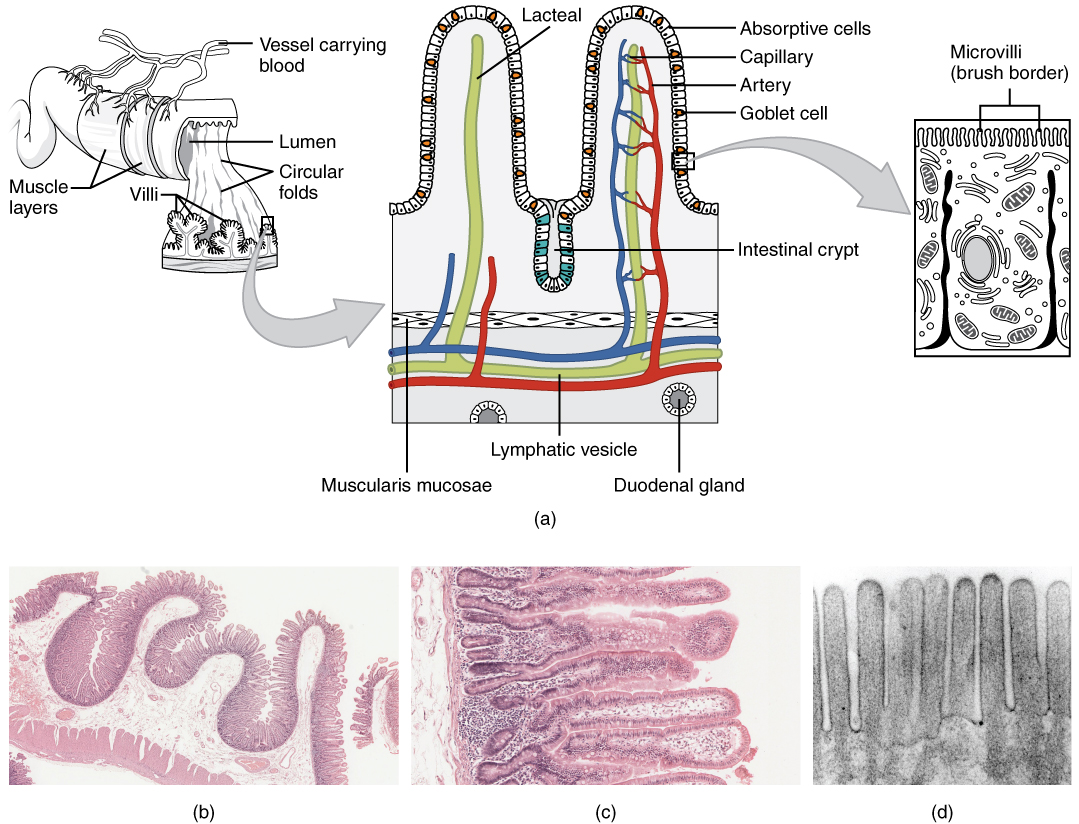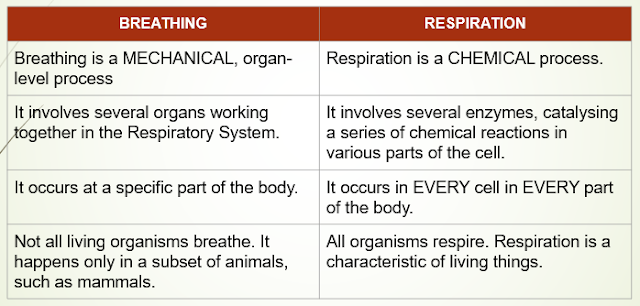DIGESTIVE SYSTEM & DIGESTIVE PROCESS [CSEC HSB & BIOLOGY]
SYLLABUS REFERENCE
HSB
- [B1.22] identify the various structures of the digestive system;
- [B1.23] relate the structures of the digestive system to their functions;
- [B1.24] describe the processes of digestion and absorption of food in the alimentary canal;
- [B1.25] discuss the fate of the products of digestion after their absorption;
- [B1.26] relate the structure of a villus to the function of absorption;
BIOLOGY
- [B2.7] relate the structures of the human alimentary canal to their functions;
- [B2.8] explain the role and importance of enzymes;
- [B2.10] describe what happens to the products of digestion after their absorption;
THE MAIN STAGES OF DIGESTION
MECHANICAL DIGESTION
In the mouth - teeth are used to grind the food into smaller pieces.
In the stomach - The food, now called chyme, is churned by the muscles of the stomach.
CHEMICAL DIGESTION
- In the mouth - the enzyme, salivary amylase, breaks down starch to maltose.
- In the stomach - the enzyme, pepsin, breaks down proteins to short polypeptide chains.
- In the small intestine - digestion is completed here, via the action of several pancreatic and intestinal enzymes such as maltase and peptidase.
THE DIGESTIVE PROCESS
MOUTH
- Mastication - mechanical digestion of food using the teeth and tongue.
- Secretion of saliva by salivary glands; salivary amylase begins the digestion of starch.
- Food formed into a bolus that can be swallowed.
OESOPHAGUS
This organ transfers food from mouth to stomach via peristalsis.
STOMACH
- Wall of stomach secretes gastric juice containing hydrochloric acid and pepsin.
- Movement of muscular wall mixes food with gastric juice and breaks up large pieces of food into a creamy mixture called chyme.
- Pepsin begins the digestion of protein, breaking them down to short chains of polypeptides.
- No digestion of starch, as amylase does not function in the acid environment. It would have been denatured by the acidic pH.
LIVER & GALL BLADDER
- The liver secretes bile, which contains bile salts to emulsify fats.
- The gall bladder stores bile and releases it into the small intestine through the bile duct.
PANCREAS
- Secretes pancreatic juice, which contains amylase, trypsin, and lipase.
- Secretes sodium hydrogen carbonate, which neutralises the stomach acid released from the stomach.
SMALL INTESTINES
- Secretes the enzymes sucrase, maltase, lactase, and peptidase, which completes the digestion of starch, protein, and fat.
- Absorbs the final products of digestion, transferring to the bloodstream.
- Absorbs water, ions, and vitamins, transferring them to the bloodstream.
LARGE INTESTINE & ANUS
- Large intestine:
- absorbs the remaining water and ions.
- stores faeces in the rectum.
- Anus:
- faeces passes out of the body
ABSORPTION
ABSORPTION IS THE MOVEMENT OF SUBSTANCES INTO THE CELLS OF AN ORGANISM.
In the context of the digestive system, it is also the transfer of digestive products, such as amino acids, from the digestive system into the bloodstream.
Absorption occurs in the following parts of the alimentary canal:
- In the ileum (small intestine): most of the absorption takes place there.
- Stomach lining: small amounts of minerals, vitamins, and water.
- Large intestine: water.
INTESTINAL VILLI
THE IMPORTANCE OF INCREASED SURFACE AREA
Our intestines are folded and coiled to fit as much as possible in the restrictive abdominal cavity.
There are two main benefits:
- This gives the food a greater distance to travel, which gives the enzymes more time to digest the food.
- It provides greater surface area and time for absorption to happen.
VILLI AND MICROVILLI
- The villi themselves also have microvilli.
- The purpose is to increase surface area over which the digestive products can be absorbed.
- Most of these products are transferred across the intestinal walls via diffusion, so a very high surface area ensures that this happens quickly and efficiently.
VILLUS' BASIC STRUCTURE
- Thin Surface Layer, allows the digestive product molecules to cross quickly via diffusion.
- Blood Vessels, connected to the circulatory system, the blood carries away most of the digestive products (e.g. glucose and amino acids) that diffuse across the vessel walls.
- These blood vessels are capillaries, with very thin walls and pores, which speeds up diffusion.
- The constant flow of blood keeps the concentration gradient steep. This also increases the efficiency and speed of diffusion.
- Lacteal: This is an extension of the lymph network.
- Fatty acid and fat-soluble vitamins are transferred into the lacteal and pass into the lymph vessels.
ASSIMILATION
WHERE DO DIGESTIVE PRODUCTS FIRST GO?
- All digestive products that pass into the bloodstream are transported directly to the liver via the hepatic portal vein.
- The liver is central to controlling the distribution of nutrients to cells, according to need.
WHAT HAPPENS TO EXCESS DIGESTIVE PRODUCTS?
- Excess glucose is stored in the liver and skeletal muscles as glycogen.
- Excess amino acids are broken down in the liver to urea and other products. The urea is sent to the kidneys via the bloodstream and excreted via the kidneys.
- Excess lipid is stored in fat cells throughout the body.













